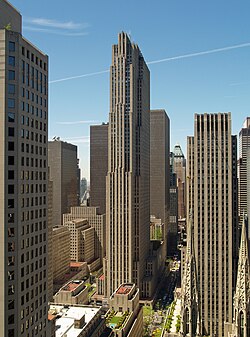Hello Everyone:
The sky has turned wee gray in Blogger land and there is a chance of rain on the horizon. Nevertheless, Yours Truly is undaunted by the weather.
 |
| Hudson Yards Vessel Manhattan, New York nypost.com |
A gated community in the middle of Manhattan sounds strange especially when you consider that Manhattan is a de facto gated community. The cost of living in the city is so prohibitively high that unless you are a millionaire, living in Manhattan is not for you. On March 15, after
12 years of planning and six of actual construction, the Related Companies real-estate company opened the doors to its new sparkling new $25 billion self-contained village for lawyers and hedge-fund types, complete with a 720,000-square-foot retail space and four star restaurants, eight-digit high rise apartments (nymag.com; Feb. 18, 2019; date accessed Mar. 19, 2019). This is only phase one.
When finished, "...when the remaining rectangle of exposed rail yards between 11th and 12th Avenues is covered by a deck and more residential towers--the who 28-acre shebang will be bigger than the United Nations, the World Trade Center, or Rockefeller Center and physically vaster, more populous, and more expensive than any private development in the country" (Ibid). Besides being huge, it signifies something fundamentally new: a one-off "supersized virtual city-state, plugged into a global metropolis..." (Ibid). A billionaires' fantasy land yours for a price but is this the kind of community Manhattan needs?
| Rendering of Hudson Yards nypost.com |
Hudson Yards is a manifestation of the crisis of civic leadership, "asleep at the wheel through two administrations, and to a pernicious theory civic welfare that presumes private development is New York's primary goal, the truest measure of urban vitality and health, with money the city's only real currency" (Ibid). The result of this thinking is the diminishing ability of government's capacity to plan, build, or fix anything of significance. New York's city hall demonstrates a shocking lack of understanding urban design by not requiring planning, hazily mandating half of Hudson Yards' acreage be open space but allowing its developer, Stephen Ross, to decides what that entails.
 |
| Rockefeller Center New York, New York en.wikipedia.org |
Rockefeller Center is the precedent for this kind of sprawling urban design. The National Historic Landmark was completed in the 1930s and employed a variety of architects, under the leadership of Raymond Hood. Daniel Okrent wrote in his definitive book on Rockefeller Center, The Epic of Rockefeller Center, that not a scintilla of public land, public money, or public oversight" (Ibid). The result of the planning and building of this iconic civic space is "an object lesson in urban design and landmark of modern art and architecture, a development ingeniously democratically woven into the fabric of the street grid" (Ibid). At first glance, Rockefeller Center presents itself as a unified space because of the stunning Art Deco details and masonry. The true source of it coherence it the plan.
From the beginning, Raymond Hood's sketches made the center a dance of massing--"the dramatic sequencing of low-, medium-, and high-rise buildings--the bedrock of that plan" (Ibid). It is a harmonious dance that creates a singular place that is part of the city. The famous landscape passage from Fifth Avenue, leading to the skating rink, framing the view of 30 Rockefeller (yes, 30 Rock), the tallest building and epicenter of the project.
| The ice skating rink during the winter Rockefeller Center New York, New York cnn.com |
Raymond Hood had full grasp of the difference between size and scale--how a site with multiple entries needs to be composed, and very important, "how architecture without urban design is just sculpture, how true art enhances the dignity of a place, and how the success of a neighborhood and its retail businesses come down to what's happening at street level" (Ibid). Hudson Yards hardly acknowledges any of these important ideas.
Another precedent for Hudson Yards is the monolithic tower developments and superblocks in the fifties and sixties, done in the name of urban renewal. The monolithic towers and superblocks were imposing and oppressive, shutting the surrounding city out. Hudson Yards is attempting to open itself to the city at-large instead of becoming a gated Singaporean community.
Hudson Yards is still new and the program for the open space is still under consideration. Thomas Woltz, of the landscape architecture firm Nelson Byrd Woltz, was given the of humanizing the glass, steel, shade, enormity, and mindlessness. To accomplish this formidable task, Mr. Woltz is planting trees and shade-tolerant shrubs and perennials. He also designed a large Spirograph of elliptical-shaped planters, made from hand-chiseled granite blocks, surrounding the Instagram-worthy Vessel by Thomas Hardwick. The curved forms are a counterpoint to all the hard edges and provide places. Bald cypresses and gum tree add more shade, a nod towards human scale. The observation deck has tourist potential, providing more Instagram-worthy images of all of New York City and the Statue of Liberty in all their awesomeness. Best part, no views of Hudson Yards.
No comments:
Post a Comment